CHAPTER 8
Envy and Healthy Envy
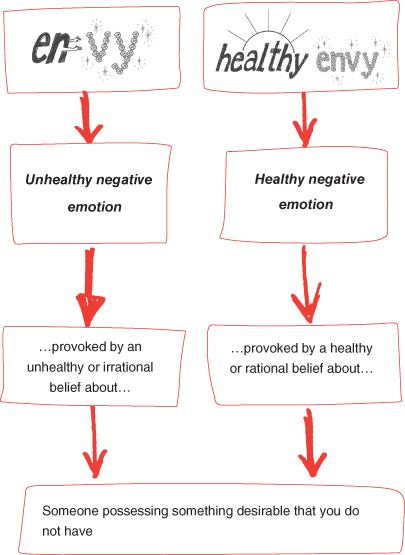
Envy may involve wanting the beauty, wealth, abilities or socio-economic status of another individual or group. Envy, historically, is one of the seven deadly sins and is also often known as the ‘evil eye’ when what you have is envied by someone else. Thomas Aquinas wrote:
‘Charity rejoices in our neighbour’s good, while envy grieves over it.’
Unhealthy Envy
Unhealthy envy is quite common and is often overlooked or misdiagnosed. Envy is often confused with jealousy. Envy is unlike jealousy. Jealousy (as discussed in Chapter 6), is about a threat to your relationship with your partner from someone else. Envy is about someone having something or someone YOU desire. It could be said envy can be beneficial when it’s healthy envy as it enables you to become aware of what you want; it can provoke aspirations, motivation and goal setting. However, in its unhealthy form it can be damaging and limiting, spoiling happiness and triggering other unhealthy negative emotions like anger, anxiety, depression and shame.
Unhealthy envy is provoked by unhealthy beliefs. A typical unhealthy envy provoking belief is as follows:
‘My friend has a partner and a baby and we are of similar age. I must have what my friend has and because I don’t it’s intolerable, awful and makes me less worthy than I would be if I had what my friend has.’
Unhealthy envy often triggers problems of low self esteem and frustration due to the fact that we frequently compare ourselves to others in a self defeating way.
We have found that unhealthy envy is often experienced when one of your peers at work achieves something that you want to achieve or when someone gets pregnant, has a baby, starts a relationship or has the type of partner or lifestyle you want. This is more noticeable when the person who has the desired advantage is relatively similar to us. Unhealthy envy is more likely when the domain of comparison is very important to you, e.g. if you are interested in sport then you are more likely to be envious of a premier league footballer than someone who is a brilliant violinist.
Unhealthy envy can be a destructive emotion both mentally and physically. When you experience unhealthy envy you tend to also feel hostile, resentful, angry and irritable. You are also less able to be grateful about your positive traits and your circumstances.
Objects of Envy
We can be envious over other people’s:
- possessions
- lifestyle
- qualifications
- looks
- success
- relationships
- fame.
The list could go on and on …
Shame and Unhealthy Envy
Shame is often experienced as a consequence of unhealthy envy. You do not find many people admitting to having unhealthy envy. If you are experiencing shame/embarrassment then you may need to work on your feelings of unhealthy envy as well as your feelings of shame. Shame is provoked by holding unhealthy beliefs about something negative revealed about you and being judged negatively for it, in this case being unhealthily envious. For example, ‘I shouldn’t be feeling envy or reveal to others that I am. If others know I’m envious they will judge me as bad and I agree with them because envy is a sign of badness.’ If you are feeling shame about your feeling of envy then refer to Chapter 7.
Common Triggers for Unhealthy Envy
The following are common themes of unhealthy envy – the list is not exhaustive. Tick the boxes that you think apply to you.
| Tick the box to identify your envy triggers |
 Physical looks Physical looks |
 Age Age |
 Youth Youth |
 Money Money |
 Lifestyle Lifestyle |
 Fertility Fertility |
 Relationship Relationship |
 Financial status Financial status |
 Academic achievement or status Academic achievement or status |
 Success Success |
 Fortune Fortune |
 Fame Fame |
 Talent Talent |
 Ability Ability |
 Family Family |
 Community Community |
 Culture Culture |
 Possessions Possessions |
 Friendship Friendship |
 Intelligence Intelligence |
 Career Career |
 Happiness Happiness |
 Luck Luck |
 Other (write your own reason) Other (write your own reason) |
Am I Healthily or Unhealthily Envious?
At the heart of your unhealthy envy are unhealthy beliefs about someone possessing something that you desire but do not have.
Such unhealthy beliefs not only provoke unhealthy envy but they have a consequence on how you think (cognitive consequences) and how you tend to behave (action tendencies). Behaviour is often an expression of the action tendencies.
When you feel unhealthy envy, for example, your thoughts may be preoccupied with ‘it’s not fair’ or ‘why shouldn’t I have that?’ or ‘why should they have so much?’.
Assess if you are envious in a healthy or unhealthy way by checking your cognitive consequences and action tendencies.
Look through the illustrations for the cognitive consequences and action tendencies and work out if you are unhealthily envious or healthily envious. It is important to put yourself in the trigger situation when you feel or felt envious. It is easy to think that you don’t have unhealthy thoughts when you are not triggered or when you are away from the trigger situation, so just imagine yourself in the frying pan, so to speak, and then work out if the envy is healthy or unhealthy.
Cognitive Consequences
Unhealthy Envy
You denigrate the value of the desired possession.
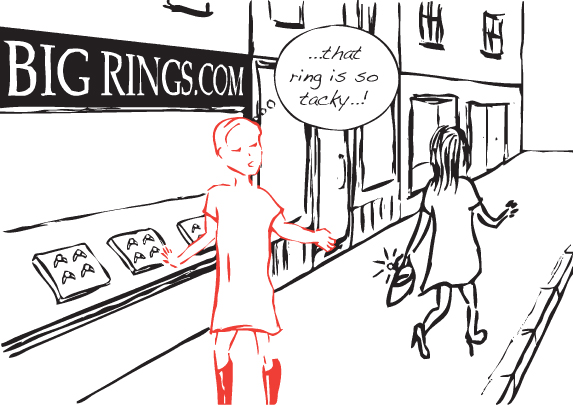
Cognitive Consequences
Healthy Envy
You honestly admit to yourself that you desire something.
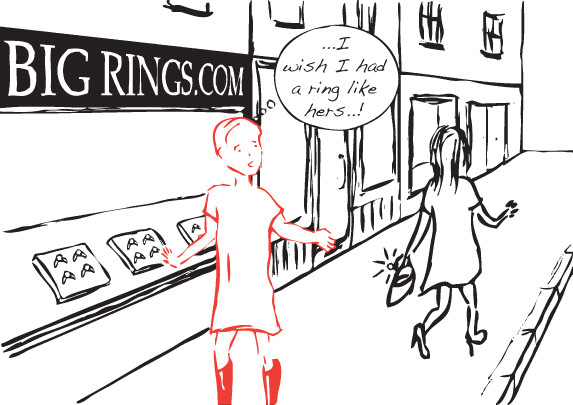
Cognitive Consequences
Unhealthy Envy
You try to convince yourself that you are happy with your possession (although you are not).
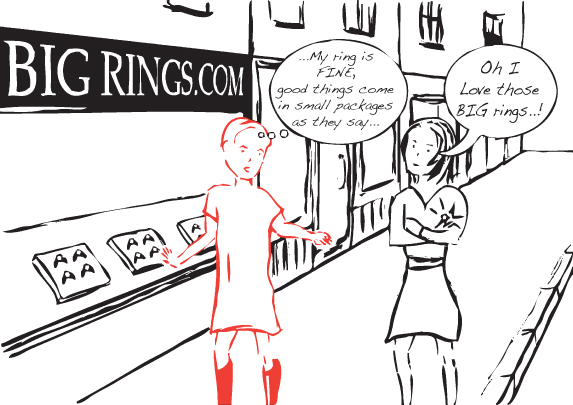
Cognitive Consequences
Healthy Envy
You do not try to convince yourself that you are happy with your possession when you are not.
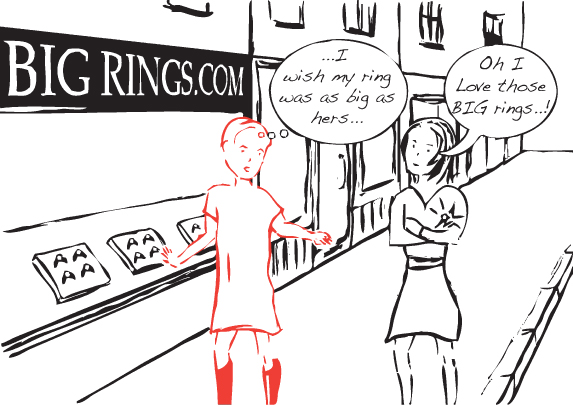
Cognitive Consequences
Unhealthy Envy
You think about how to acquire the desired possession regardless of its usefulness to you.
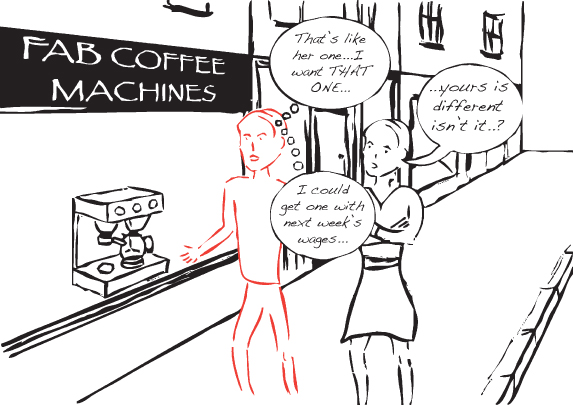
Cognitive Consequences
Healthy Envy
You think about how to obtain the desired possession because you desire it for healthy reasons.
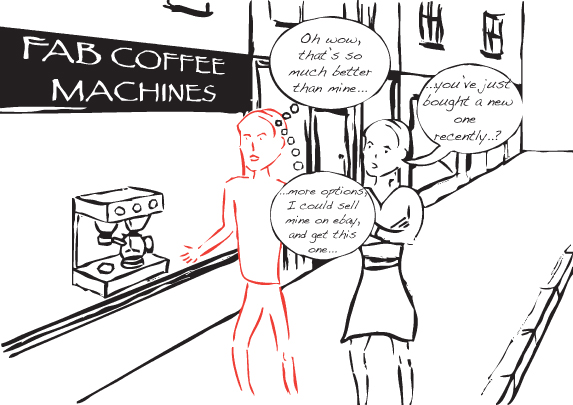
Cognitive Consequences
Unhealthy Envy
You think about how to deprive the other person of the desired possession.

Cognitive Consequences
Healthy Envy
You can allow the other person to have and enjoy the desired possession without denigrating the person or the possession.
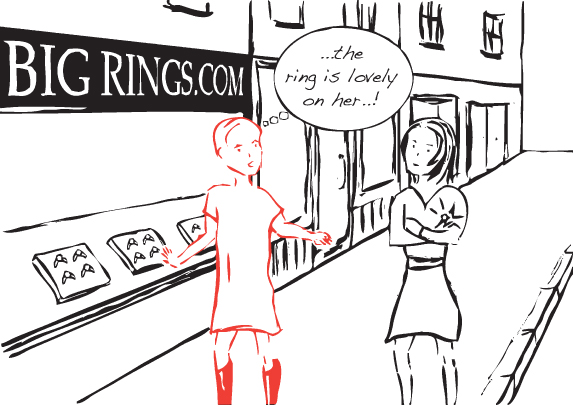
Action/Action Tendencies
Unhealthy Envy
You belittle verbally the person who has the desired possession.
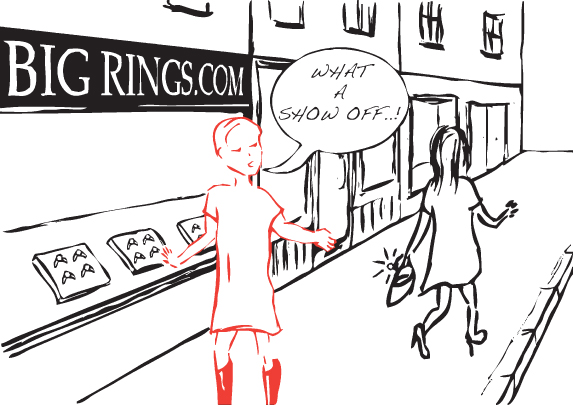
Action/Action Tendencies
Healthy Envy
You obtain the desired possession if it is truly what you want.

Action/Action Tendencies
Unhealthy Envy
You verbally belittle the desired possession.
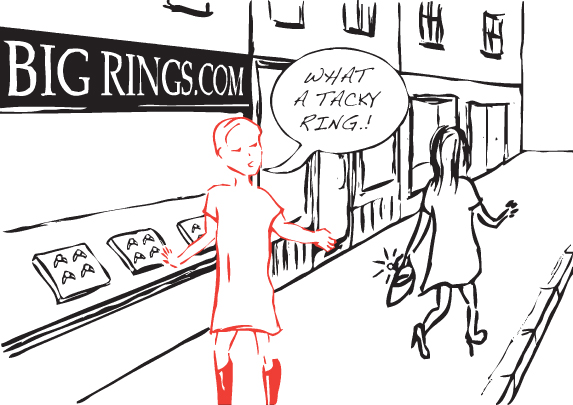
Action/Action Tendencies
Healthy Envy
You do not verbally belittle the desired possession.
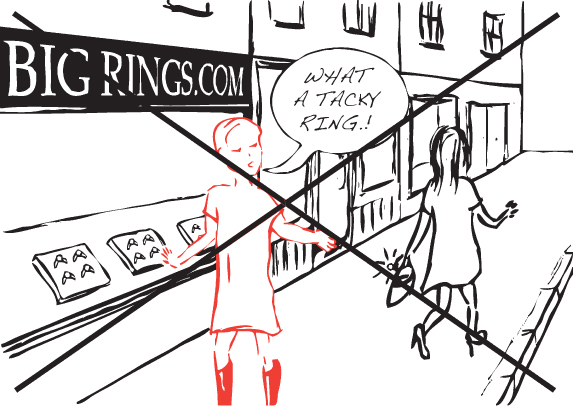
Action/Action Tendencies
Unhealthy Envy
You take away the desired possession from the other person (either to have it or to deprive the other person from having it).

Action/Action Tendencies
Healthy Envy
You do not take away the desired possession from the other person.

Action/Action Tendencies
Unhealthy Envy
You spoil or destroy the desired possession so that the other person does not have it.
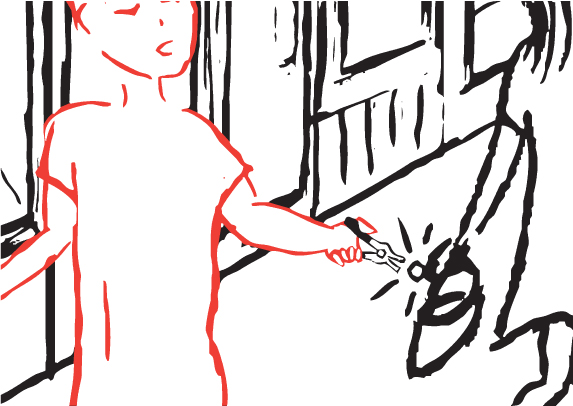
Action/Action Tendencies
Healthy Envy
You do not spoil or destroy the desired possession so that the other person does not have it.

Now …
General Change or Philosophical Change for you?
General Change

Philosophical Change
Remember to take your time if you are choosing this route, as Philosophical Change is about changing your unhealthy beliefs over the long term.
Envy is provoked by unhealthy beliefs about someone else possessing something desirable that we do not have. Unhealthy beliefs are made up of absolutist rigid beliefs in the form of a MUST, HAVE TO, NEED TO, GOT TO, ABSOLUTELY SHOULD, from which three further derivative disturbed beliefs come.
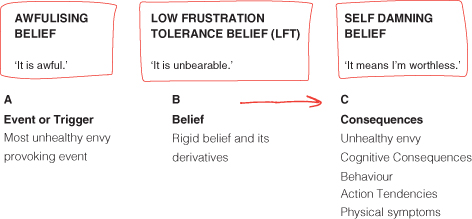
A rigid belief, at B, is a demand about the most unhealthy envy provoking aspect of an event – it is a demand to absolutely have what someone else has.
For example, if what you are most unhealthily envious of is your friend’s lifestyle, then the rigid belief is I must have my friend’s lifestyle. The consequences of not having the rigid belief met are any or a combination of the three derivative beliefs.
For example:

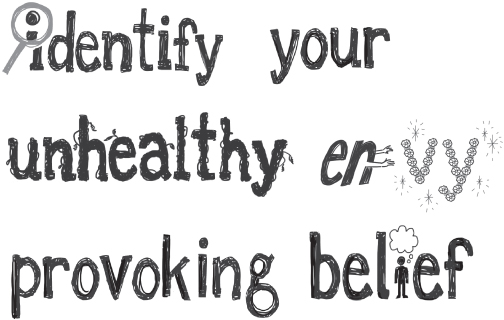
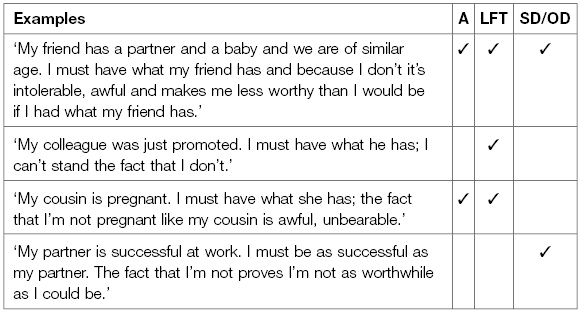
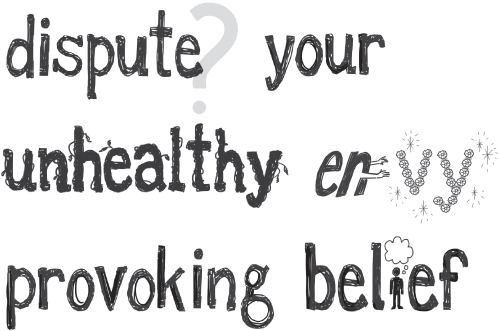

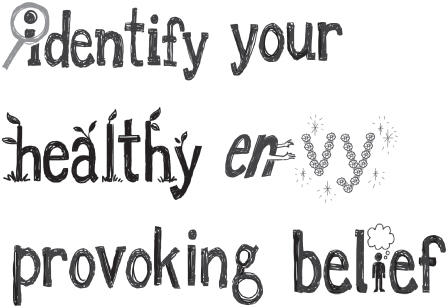
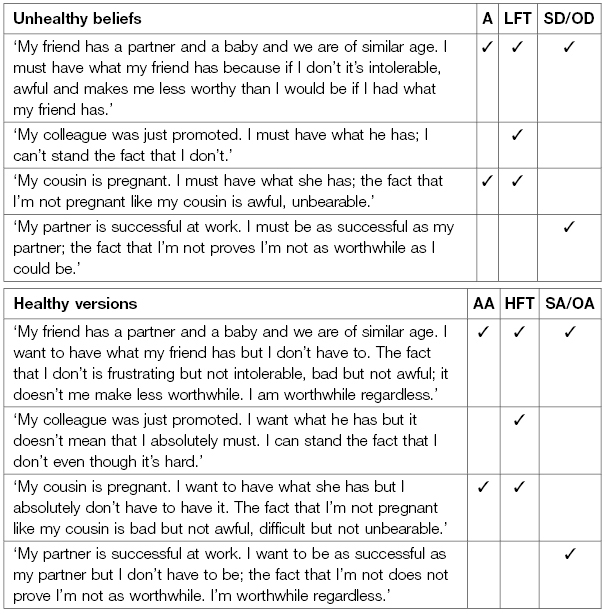
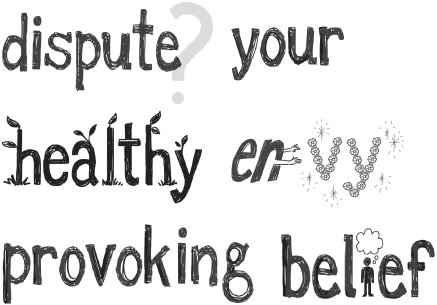
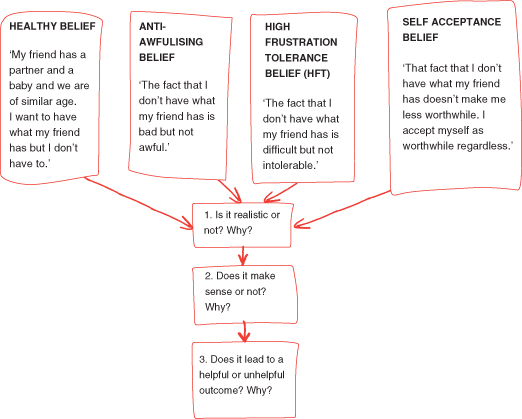
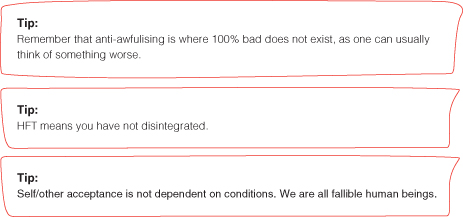
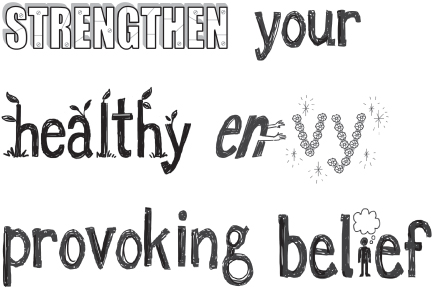

- Think and act in accordance with your healthy belief repeatedly and consistently in a forceful manner until eventually your emotional state changes from unhealthy envy to healthy envy.
- Remember your emotion of unhealthy envy will change – the new way of thinking and the new actions you will implement will feel uncomfortable initially but this is completely natural. You are changing an old habit of unhealthy thinking and old habitual unhealthy envy behaviours. It takes a few weeks of repetitions done consistently and forcefully.
- The behavioural goals you set for yourself need to be challenging but not overwhelming. If you overwhelm yourself then it defeats the object of the exercise.
- Start with imagining yourself thinking and acting in a healthy manner whilst being in the trigger situation until you think you are ready to challenge yourself in real life. For example, you may set a goal that whilst socialising with friends you only express healthy emotional responses about other people’s good fortune (rather than your usual unhealthy envy provoked comments) and then continue until you achieve your desired goal.
- Repeat your healthy belief in your head daily and particularly when you are imagining yourself in the trigger situation. This mental rehearsal will help you to remember it when you deliberately face the trigger situation in real life.
- Once you achieve your desired goal, whatever it is, then you need to maintain the helpful thinking and actions.
- Review how you did, each time you challenge yourself, then work out what you can do differently or better the next time. Then do it. Do not demand perfection from yourself. The process of moving from unhealthy envy to healthy envy is uncomfortable and uneven. Some days you will make bigger strides when you challenge yourself and other days you will make small strides or even take a step back. The important thing is to accept that this can happen and then bring your focus back to what you are doing and continue with it.
- Remember, you didn’t learn to drive a car, ride a bicycle or learn to read overnight, it takes repetition and focus and consistency.
Chapter 8 – Envy – Takeaway Tips
- Self awareness: practise examining your thoughts to determine whether you feel healthy or unhealthy envy. If you find that they are triggering unhealthy envy, remind yourself of how these thoughts don’t help your life and can actually harm it. The more you can manage to catch and correct your thinking, the easier it will be to remain in a state of healthy envy.
- Become more self aware by noticing your behaviours and correcting them.
- Act towards others in a way you would like to be treated yourself. Remember, you are not avoiding experiencing healthy envy.
- Take time to set goals in your life and create your own aspirations, allowing other people’s lives to inform you in a helpful, healthily envious way.